I’d like to take another minute to write about other interesting places in Fairbanks that we were fortunate enough to visit and tour.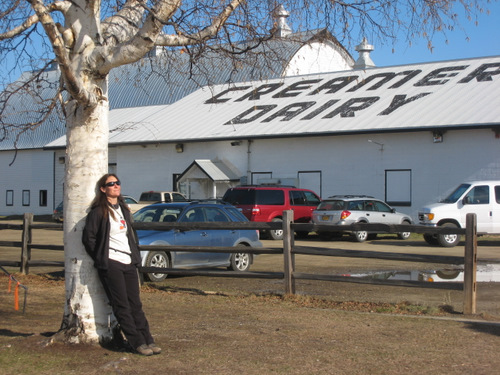
Creamer’s Refuge started out as the oldest and most successful dairy in Alaska. It opened with three cows during the gold rush era in 1928 and ran successfully until 1966. Since Alaska is a bit cold in the winter, (-40 degrees anyone?), the cows were in barns for about 7 months, from September through April. Are they happy cows?
They sure were when they got out and got to feast on barley, which was planted and spread out just for them. These extra seeds of grain also brought birds, and more birds and more birds. Ever since then, people in Fairbanks look forward to not only the day that the sun comes back but also to the day that the birds arrive.
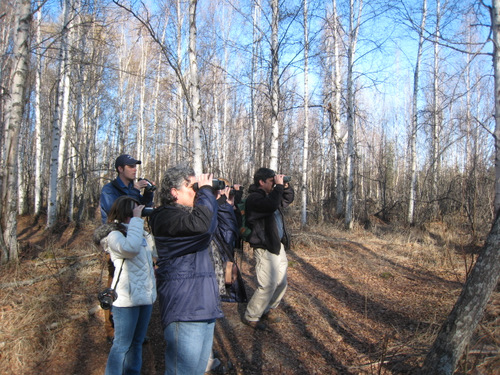
Though the dairy closed after the flood of 1968, the developers did not get a chance to cement it over. Instead the community rallied and came together to raise the $5,000 needed to turn it into a wildlife sanctuary. Now it’s an integral part of the community here with trails to explore and a home for the thousands of migrating songbirds and shorebirds that arrive each spring and fall.
We walked in the fields and learned all about not only the birds but also the trees and the permafrost from Melissa Sikes, our guide.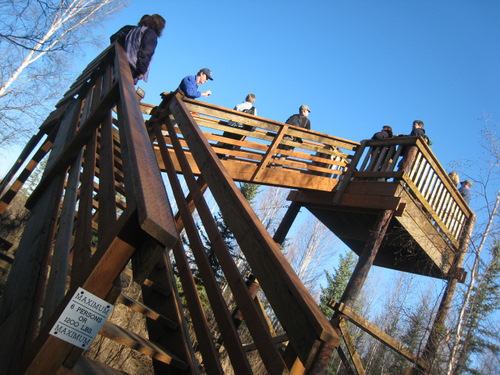
Having read my first journal, how many trees do you think there are in Fairbanks?
How many different kinds?
Melissa declares that Fairbanks is a naturalist’s dream as there are only 6 native trees: aspen, poplar, birch, tamarack, white spruce, and black spruce. Also there are no reptiles and few decomposers such as centipedes and worms. Sadly, there is only 1 amphibian but lots and lots of really big mosquitoes that like to bite and that make huge ugly messes if smashed on your shirt.
Melissa also showed us the potential effects of climate change on the trees here in Fairbanks. Much of the ground here in Alaska is frozen and is appropriately called permafrost. Trees are equipped to survive here with very shallow roots but when the frozen ground expands in the winter cracks form. These cracks fill up with water and as the water warms and cools the cracks expand and form wedges. This is a natural process but there is a potential that this rate is speeding up and creating more cracks and thus toppling more trees faster.
Will we see more and more of these “drunken forests”?
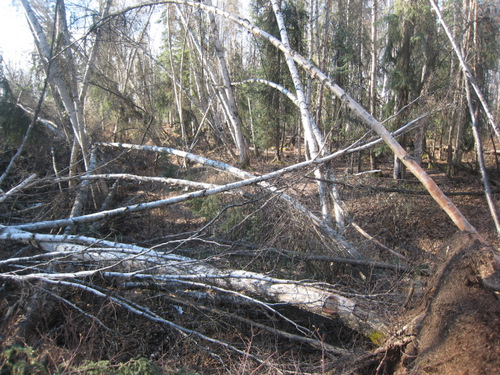
Matthew Sturms, a chief scientist at the Cold Regions Research and Engineering Laboratory, taught us even more about PermafrostPermanently frozen ground.. Having just returned from a six-week trek to bush schools, Matthew is a traveling substitute teacher and a “snow expert” that has done snow research for about 30 years. Matthew took us on a tour of a permafrost tunnel on the outskirts of Fairbanks.
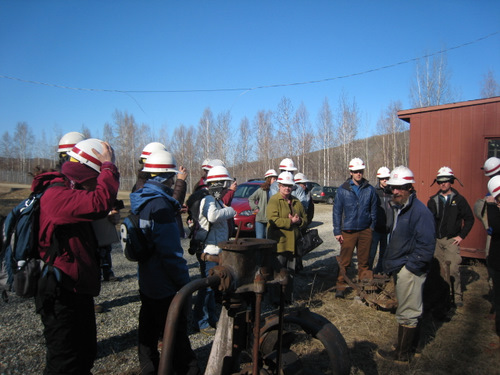
This tunnel was constructed in the 1960s as a research facility and we had the opportunity to go in it for a tour. The tunnel has to stay cooled with a refrigeration system as the warm air would melt the ice in the ground and collapse the tunnel. We saw bones imbedded in the walls of the tunnel left from 12,000 years ago.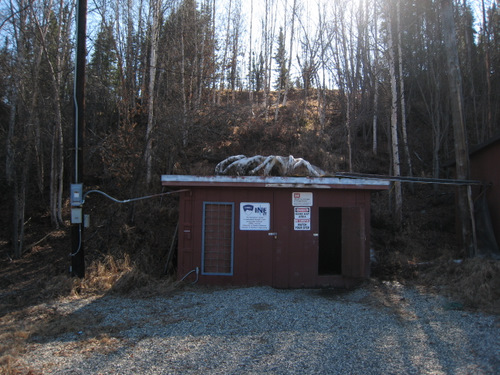
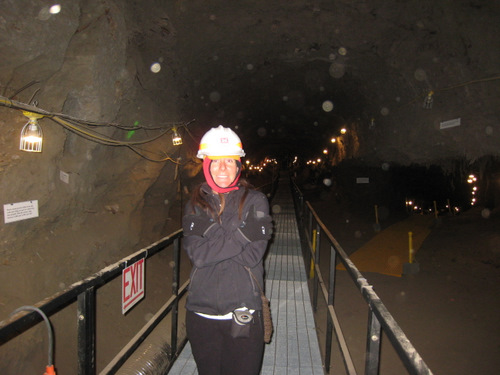
Matthew told us that permafrost is land that is frozen at times. Ice in snow and lakes and maybe sea ice is common in the lower 48 but frozen ground is unique to Alaska. In the northern parts of Alaska the permafrost is continuous and can be 1000 feet deep. Building and living in Alaska is difficult with this permafrost as there is no groundwater system and, especially in the more remote areas, you can’t have septic systems and plumbing. To complicate things even further, on top of the permafrost is an active layer that changes day by day. It freezes and thaws in the summers and winters and can cause settling problems and makes building houses and roads complicated.
In the area around Fairbanks there are breaks and holes in the permafrost especially on south facing slopes. The permafrost is also being destroyed because it’s getting so warm here; the average temperature in Fairbanks has increased from –5 degrees Celsius to –0.5 degrees Celsius. Buildings and roads are sinking.
Sturms left us with an important message regarding climate change. He says it’s the “transitions that worry people.” If the melting of the permafrost is a multi-century transition, we can handle it. We can adapt to anything if it takes 1000 years. However, problems arise if we build for one environment, and transition to another in our lifetimes. He wants us to move past the false debate and think about how we respond to stuff.
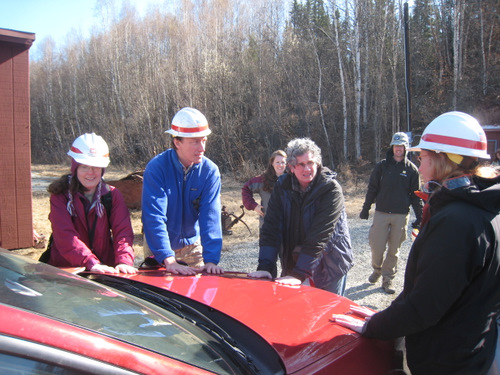
In an interesting way, this lead us straight to a place of interest just a few minutes down the road: The Alyeska pipeline.
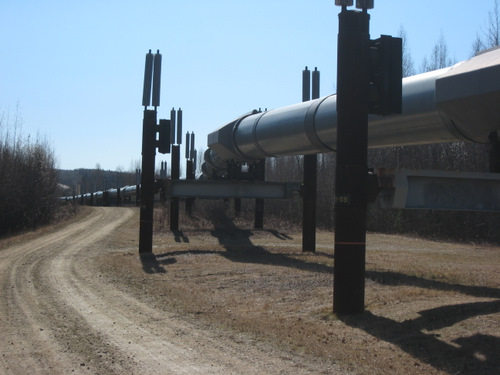
Spanning 800 miles, the oil pipeline has a 48" diameter and has a capacity of 9 million barrels. It was finished in 1977 after three years or work and it has 554 animal crossings and it crosses 54 major rivers and 3 major mountain ranges.
How does the pipeline relate to the permafrost?
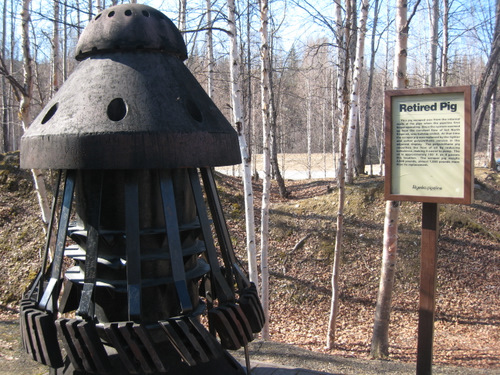
- next >
- 1 of 90


Comments